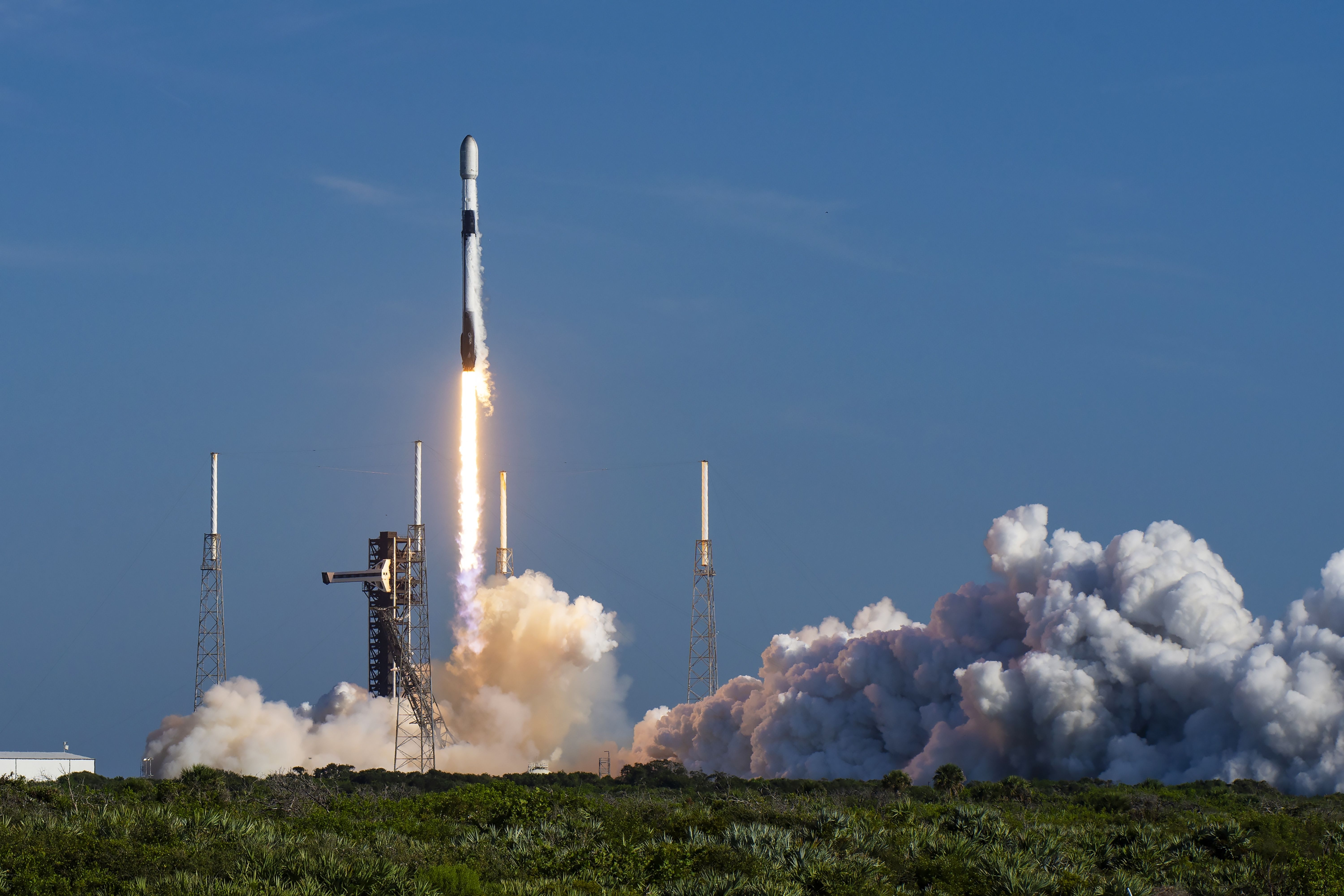Summary SpaceX debuted a new Falcon 9 booster with successful Starlink satellite launch. The booster, B1085, took off from Cape Canaveral Space Force Station, marking SpaceX's 59th launch from Florida this year. Starlink is emerging as a top-tier product in the inflight connectivity market.
SpaceX debuted a new Falcon 9 booster with the successful launch of 22 Starlink satellites on Tuesday morning. The first stage of the rocket landed safely on a droneship in the Atlantic Ocean approximately eight minutes after launch. New Falcon 9 booster launches 22 Starlink satellites The Group 10-5 mission launch took place at 09:20 ET from Space Launch Complex 40 (SLC-40) at Cape Canaveral Space Force Station in Florida and became SpaceX's 59th launch from Florida this year.

A brand-new booster - B1085 - was chosen for the launch and would be met by SpaceX's drone ship, A Shortfall of Gravitas, for a successful landing. Weather conditions were not initially favorable, but the decision to go ahead was made towards the end of the four-hour launch window. With the Falcon 9's upper stage completing its second burn, SpaceX confirmed the payload of 22 Starlink satellites had successfully deployed approximately an hour after launch.
Interestingly, the new booster is being lined up to launch the next Crew Dragon launch, which is scheduled for no earlier than September 24th. High-speed internet Starlink announced its plans to break into the inflight connectivity (IFC) market back in 2021 and would secure its first customers a year later. Since then, several carriers have opted for Starlink's product, including Qatar Airways, Hawaiian Airlines, airBaltic, and most recently, WestJet .
The company is now contracted to fit over 1,000 commercial aircraft with its product, and the number is growing. Starlink is rolling out for aviation and more and more airlines are announcing their plans to install it on their fleets. By all accounts, the onboard WiFi with Starlink is excellent, essentially giving passengers access to home broadband-quality internet on a plane.
Because the Starlink constellation is positioned in Low Earth Orbit (LEO), it has an advantage over competitor systems which typically utilize geostationary satellites, helping to reduce latency and boost speeds. According to a Space.com report, SpaceX has sent an estimated 6,800 Starlink satellites into orbit in just over five years, although many have been decommissioned.
Nonetheless, it puts into perspective the scope of SpaceX's network of satellites, which is far larger than any of its competitors. Not all Starlink launches go to plan, as occurred last month when a Falcon 9 failed to perform a second stage burn due to a liquid oxygen leak - this led to the loss of 20 Starlink satellites and a temporary FAA ground stop . The company is preparing for the manned Polaris Dawn launch next Monday, funded by billionaire Jared Isaacman, which will see the world's first all-civilian spacewalk in brand-new SpaceX spacesuits.
.



















